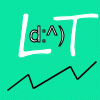aire,
I am no cycle expert and have no knowledge of hurst formal phasing methods. Correct me if i am wrong. With the assumption that April 05 was the 9 month cycle bottom, and with a presumed extension of the time length, can't the next 9 month cycle bottom be around June 06. That would make the 9 month cycle length about 1.5 times the prior nine month cycles length. If that does not violate your cyclical model rules, then the next 9 month could very well been March 07, giving the timeline for the next 9 month bottom around December 07.
Cuz, from e-wave perspective and e-wave time anlaysis, Dec should complete wave C of this entire correction from June 07, which should come around Dec 07. That would also fit nicely with a 9 month cycle bottom.
Thoughts ??
NAV, a cycle that suddenly jumps to 1.5 times it's average length would raise a big red flag in Hurst's cycle phasing analysis. the "missing" 9 month cycle that was due in early 06 can be found by use of a Hurst commonality phasing model. an examination of a set of stocks and sectors noting easily labeled cycle lows. here's three charts i had on file, all suggesting there was a 9 month cycle low in mid/late jan 06.
XLF... 40wks (9 months) from the april 05 low and approx 18 months from the aug 04 18 month low we have a mild pullback after a strong rally and consolidation
BA.... a strong uptrend with mild pullbacks on all cycle lows from march 2003. the late january 06 low is 40 wks (9 months) from the april 05 low and 78 weeks (18 month) from the aug 04 18 month low. note the acceleration up after the jan 06 18 and 9 month low.
GE.....provides a clear cut 18 and 9 month low in the first week of feb 07. a small variation from the late jan lows of some other indices and stocks, and is quite normal. GE also provides clear visual evidence of a 9 month low in late nov 03 which is not well defined on the SPX and other broad indices and a early nov 06 9 month low that just manages to appear on index charts. at the same time, the aug 04 18 month low and the april 05 9 month low are not that obvious on GE as on SPX etc. this is the norm. at any time, visual evidence of any particular cycle low may not be apparent, but using the cyclic principals of commonality and variation (all equities share the same nominal cyclic model subject to minor variation) and/or other hurst tools one can extract the needed cycle info.
Aire,
That makes sense. Thanks for the detailed explanation.
Edited by NAV, 12 September 2007 - 11:49 AM.


















